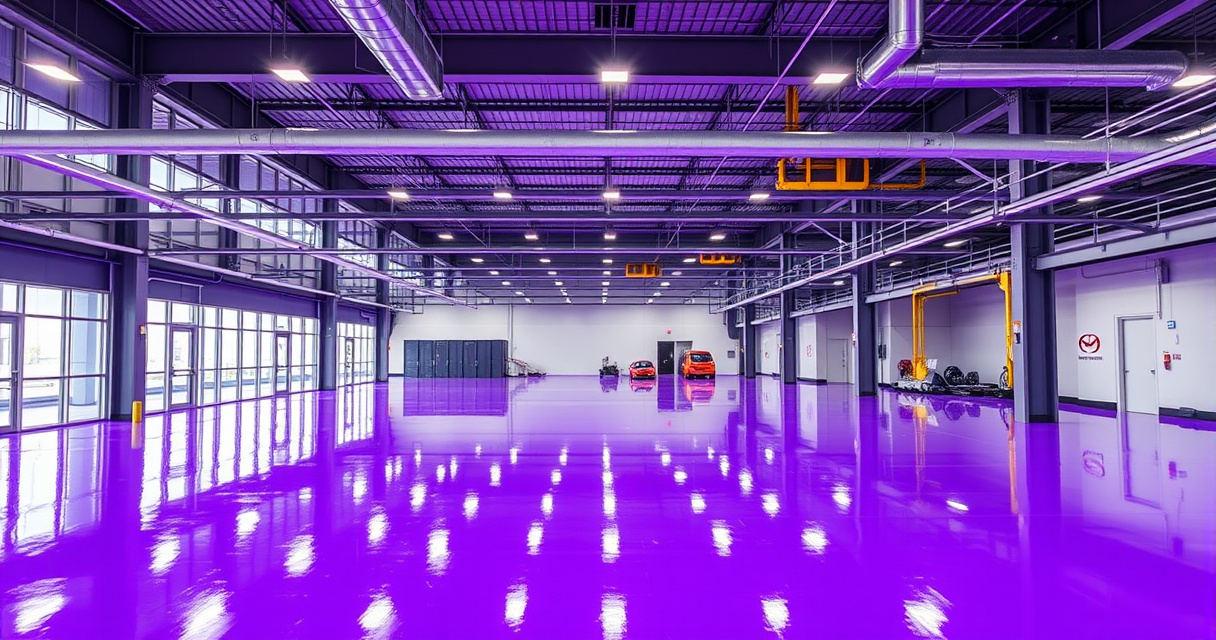Image unavailable
Polyaspartic FlooringCommercial & Industrial
Revolutionary fast-cure polyaspartic coating systems that deliver superior performance with minimal downtime. UV-stable, flexible, and incredibly durable for the most demanding applications.
Image unavailable
What is Polyaspartic Flooring?
Polyaspartic flooring represents the latest advancement in high-performance coating technology. These aliphatic polyurea coatings cure through a unique chemical reaction that creates an incredibly durable, flexible surface in a fraction of the time required by traditional epoxy systems.
The key advantage of polyaspartic coatings lies in their rapid cure time and exceptional versatility. Unlike epoxy systems that require days to fully cure, polyaspartic floors can return to service in as little as 24 hours, making them ideal for facilities that cannot afford extended downtime. The coatings also maintain their performance across a much wider temperature range and provide superior UV stability.
Polyaspartic systems are perfect for high-traffic commercial and industrial environments where speed of installation, durability, and aesthetic appeal are critical. They excel in applications requiring UV resistance, thermal cycling resistance, and rapid return to service, including outdoor areas, loading docks, retail spaces, and manufacturing facilities with tight production schedules.
Technical Specifications
| Specification | Standard System | Heavy-Duty System |
|---|---|---|
| System Build-up | Primer + Base + Topcoat | Primer + Base + Broadcast + Topcoat |
| Total DFT (Dry Film Thickness) | 20-30 mils | 40-80 mils |
| Primer DFT | 5-8 mils | 8-12 mils |
| Base Coat DFT | 10-15 mils | 20-35 mils |
| Topcoat DFT | 5-8 mils | 10-15 mils |
| Cure Time (77°F) | 1-2 hours between coats | 2-4 hours between coats |
| Return to Service | 4 hours foot traffic, 24 hours full load | 8 hours foot traffic, 48 hours full load |
| Service Temperature | -40°F to 200°F continuous | -40°F to 250°F continuous |
| Application Temperature | 35°F to 100°F | 35°F to 100°F |
| Slip Coefficient (Dry) | 0.70-0.90 (ASTM D2047) | 0.80-1.00 with aggregate |
| UV Stability | Excellent - no yellowing | Superior - outdoor rated |
| Chemical Resistance | Very good to most chemicals | Excellent to all common chemicals |
| Abrasion Resistance | 10-20 mg loss (ASTM D4060) | 5-12 mg loss (ASTM D4060) |
Ideal Applications for Polyaspartic Flooring
Loading Docks & Outdoor Areas
UV-stable formulations perfect for areas exposed to sunlight. Weather-resistant and maintains color and gloss indefinitely.
Retail & Showrooms
Fast installation minimizes business disruption. Excellent aesthetics with unlimited color options and decorative effects.
High-Traffic Warehouses
Superior impact resistance and flexibility handle heavy forklift traffic. Fast cure reduces operational downtime.
High-Temperature Environments
Maintains properties up to 250°F. Ideal for areas near ovens, steam cleaning, or other heat sources.
Automotive Facilities
Excellent chemical resistance to oils and solvents. Fast cure allows quick bay turnaround for service operations.
24/7 Operations
Minimal downtime installation perfect for facilities that cannot shut down. Night/weekend installations possible.
Polyaspartic Flooring Gallery
Polyaspartic vs Other Flooring Systems
Polyaspartic Advantages
Rapid Cure Time
Return to service in 24-48 hours vs 3-7 days for epoxy systems
Superior UV Stability
No yellowing or chalking, perfect for outdoor and sunlit areas
Wide Temperature Range
Application from 35°F to 100°F, service from -40°F to 250°F
Exceptional Flexibility
Superior impact resistance and thermal cycling performance
Unlimited Colors
Full spectrum of colors and decorative effects available
Considerations
Higher Initial Cost
20-40% more expensive than epoxy, but often cost-effective due to reduced downtime
Fast Working Time
Requires experienced installers due to rapid cure - less forgiving than epoxy
Chemical Resistance
Good but not quite as broad as 100% solids epoxy for extreme chemical exposure
Surface Preparation
Requires same thorough prep as epoxy - no shortcuts possible
Cost & Downtime Analysis
Standard Polyaspartic
Heavy-Duty Polyaspartic
RecommendedDowntime Savings
• 3-5 days less downtime
• Weekend installation possible
• Faster return to full capacity
• Reduced labor disruption
Request a Spec & Quote in 24 Hours
Get a detailed specification and accurate quote for your polyaspartic flooring project
Frequently Asked Questions
Frequently Asked Questions
Polyaspartic coatings cure much faster (1-2 hours vs 24+ hours for epoxy), have superior UV stability, and can be applied in a wider temperature range. They're also more flexible and impact-resistant, making them ideal for high-traffic areas and outdoor applications.
Yes, polyaspartic coatings can be applied in temperatures as low as 35°F, unlike epoxy which requires 50°F minimum. This makes them ideal for winter installations and unheated facilities. Fast cure times also reduce weather-related delays.
Polyaspartic floors can typically handle foot traffic in 2-4 hours and full vehicle traffic in 24-48 hours, depending on the system. This dramatically reduces downtime compared to epoxy systems that require 3-7 days for full cure.
Absolutely. Polyaspartic coatings have excellent UV stability and won't yellow or chalk like standard epoxy. They're perfect for loading docks, outdoor walkways, and partially covered areas exposed to sunlight.
Polyaspartic systems typically cost 20-40% more than epoxy initially, but the reduced downtime often makes them more cost-effective overall. For facilities where every hour of downtime costs thousands, polyaspartic pays for itself quickly.
Yes, with proper surface preparation. We diamond grind the existing epoxy to create mechanical adhesion, then apply a primer designed for non-porous surfaces. This allows upgrading old epoxy floors without complete removal.
Polyaspartic coatings maintain their properties up to 200°F continuous service temperature, significantly higher than standard epoxy. They're excellent for areas near ovens, steam cleaning operations, or other heat sources.
